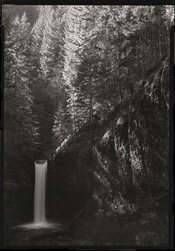he "highlights first" approach is true
A "shadows first" approach is best
Why would you formulate it like this, if ultimately, you arrive at this conclusion:
as we are all doing this for fun, it matters not one whit which method one employs or champions.
I'd add that even those who don't do it for fun (alone), they'd still obviously be entirely free to do as they please.
And whether it 'matters not one whit' - I don't know. I think it does, really. But we're evidently free to do as we please.
Of course, I understand that you're offering your insights based on your extensive professional experience as well as an objectively sensible line of reasoning, and that the approach you suggest should reliably yield prints that span the full density range of the paper while also showing differentiation in all (relevant) parts of the image. Which will probably be fine for many printers - but by far not all, and it's certainly not a matter of 'true' or 'best'. So why formulate it that way? It implies that there's a right and a wrong way to do it. Especially inexperienced printers who can benefit the most from solid advice are often confused by this. We see it all the time in the questions novice darkroom workers ask, which often feature an undertone of "I want to do it correctly."
I advocate distinguishing more explicitly between someone's requirements/criteria and how different approaches can realize (entirely or in part) those requirements. While it may seem/feel like a lot of work and require more words than a simple "here's how to do it," I think it really does help those who arrive at the scene and are trying to make sense of the seemingly conflicting information.
Personally, my approach is different from yours, and much more similar to that of
@AndrewSandersonPhoto, where I moreover determine the contrast grade that will encompass part of the tonal range I want to print, but not all. The rest I fill in with burning and/or flashing. I do this because it allows me to optimize (within my visual criteria) contrast where I want it. I'm not advocating that this is somehow a 'correct' way of working, or universally recommended. It's
one way of doing it, which I personally use
much of the time, and at
this particular stage in my printing 'career'.


 We were never told, but later I assumed it was a copy neg.
We were never told, but later I assumed it was a copy neg.

